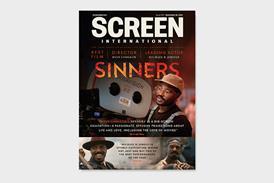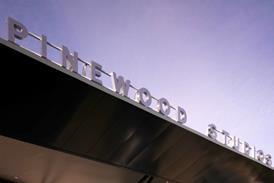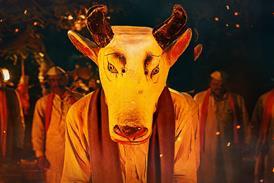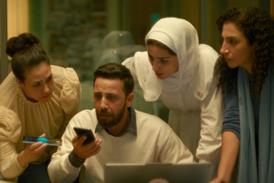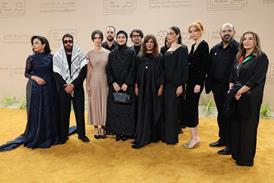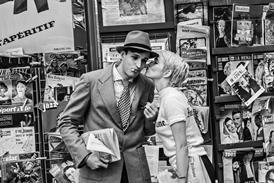Dir: Alex de la Iglesia. Spain-France. 2010. 105mins
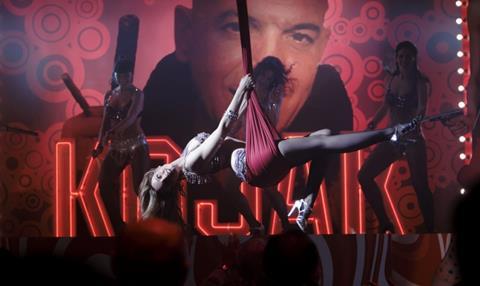
This political slasher portraying life in Franco’s Spain as a horror movie must be one of the most hysterical films ever made about a fascist regime, and among the least pleasant pictures devised about circus life and particularly about jesters. A genre film par excellence, owing its inspiration to such sources as James Whale, Alfred Hitchcock, Tod Browning, King Kong and Pan’s Labyrinth, to mention just a few, it may very well catch the fancy of Venice jury president Quentin Tarantino, but its grating black humor, if that’s what it is, will have a lot of trouble travelling beyond the borders of Spain.
Viciously brutal, bordering on horrific, the disparate scenes are shot alternately in black and white and in colour for dramatic effect.
Alex de la Iglesia, who has a reputation for twisting genres movies into mad excesses for dark comic effects, doesn’t feel really funny this time around. To exorcise a past that lies heavy not only on him but on all of Spain, he has chosen to go back to a time when he was eight years-old and Franco was still in power.
Except for a short introductory 1937 sequence, in which a clown in drag kills soldiers with a machete, it all takes place in 1973 inside a circus, fully equipped with wild animals in cages; a human cannonball trying and failing to perform impossible feats; a quarrelsome couple training dogs; someone else training an elephant; two clowns, and a beauteous acrobat called Natalie (Caroline Bang).
Javier (Carlos Areces), the fat and gloomy Sad Clown, is the son of the jester who violently went mad in the introduction, and still nurses immense sorrow for his father who was executed. Sergio (Antonio de la Torre), the Smart Clown, beloved by all children, is a brutal, violent drunkard everyone fears. He beats up anyone who stands in his way and his sadistic relation with Natalie which she perversely enough seems to relish, drives the poor, helpless Javier, also in love with her, out of his mind.
In the course of the duel raging between the two of them and escalating to monstrous dimensions, both are grotesquely disfigured and both lose control, running amok in the streets, shooting and hitting-out in all directions, with the police ineffectually chasing after them. It’s like the Good, who is no longer that good, and the Bad, who becomes worse, both of them turned Ugly as well, battling for the Beautiful Soul of Spain that can’t make up its mind which to prefer.
While all this is going on, State television provide reports on the historical background, one of the scenes in the film reconstructing the explosion in which Prime Minister Carrero Blanco is blown into smithereens, in the most famous anti-governmental terrorist attack of that period.
Naturally, every single episode here can be translated into comments on Spanish fascism and the effect it had on the people who lived under it. For instance, the climactic scene takes place on the top of a gigantic cross where the three protagonists are trashing and slashing each other for dear life, while the law enforcement forces are missing every single shot they take at them. The nature of the location and the identity of the person chosen to be sacrificed by the script, are of course symbols, referring both to the impassive position of Church and the price paid by the Spanish people. It is not clear, however, how many viewers would be interested to follow the film to that point, draw the comparisons and interpret the picture’s intentions, after enduring all the visual punishment that had been inflicted on them before, without much rhyme or narrative reason.
Viciously brutal, bordering on horrific, the disparate scenes are shot alternately in black and white and in colour for dramatic effect, but since all the characters in this film are never more than metaphorical and whatever happens to them doesn’t make much sense, their fate doesn’t really much of a difference, one way or another. Areces’ Javier, playing the meek victim going out of his mind, does it in a blunt, obvious manner; de la Torre’s Sergio seems to be in a constant state of furious sadistic mirth which extends way beyond his drunkenness, while Caroline Bang pouts and fusses like a despondent sex kitten going in and out of shock every time the camera starts rolling.
Production companies: Tornasol Films, Castafiore , La Fabrique 2
Producers: Gerardo Herrero, Mariela Besuievsky
International Sales: Films Distribution, www.filmsdistribution.com
Cinematography: Kiko de la Rica
Production designer: Eduardo Hidalgo
Editor: Alejandro Lazaro
Music: Roque Banos
Main cast: Carlos Aceres, Antonio de la Torre, Carolina Bang, Sancho Gracia, Juan-Luis Galiardo, Enrique Villen, Manuel Tejada.

